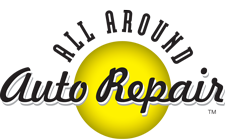Believe it or not, back in the 1950s only about one percent of a car’s value had to do with electronics. Fast forward to 2010 and thirty percent of a car’s value is connected to its electronic system. That number is even higher today with no signs of stopping.
In fact, one day, perhaps this century, cars will be entirely electronic and autonomous, but the techies in Silicon Valley are a long way from actualizing that dream. Some of the sensors and telematics that will eventually make that dream possible, though, are already in your vehicle today.
Auto Repair Shops Have ASE-certified Automotive Technicians
 Your current vehicle is chock full of sensors connected to control units for particular systems in your vehicle to ensure optimal performance. As an example, your transmission likely has electronics connected to it to guarantee smooth shifting and less torque interrupt during shifting. And, of course, your engine has a centralized engine control unit to optimize the performance of your vehicle.
Your current vehicle is chock full of sensors connected to control units for particular systems in your vehicle to ensure optimal performance. As an example, your transmission likely has electronics connected to it to guarantee smooth shifting and less torque interrupt during shifting. And, of course, your engine has a centralized engine control unit to optimize the performance of your vehicle.
Your engine control unit is so important because it can allow an auto technician at All Around Auto Repair to “talk” to your vehicle’s systems and interconnected sensors with on-board diagnostics (OBD).
On-board vehicle diagnostics hit their stride over the last decade or two in the sense that sensors have gotten better and in the 1980s – when they first hit the market – they would really only tell you, or the auto technician, when something had gone seriously haywire.
Some of that carries over today with diagnostic trouble codes, but now real-time readings and greater accuracy is possible when an auto technician uses the right tool.
Fact is, your engine control unit does a dizzying amount of things: controls the air-fuel ratio, ignition and cooling systems control, throttle control, the rate of fuel injection, and (last but definitely not least) onboard diagnostics.
Getting an auto technician up in there with to check the on-board diagnostics is critical for keeping your car in tip-top shape.
Cars are More Electronic and Lasting Longer
The typical car owner in the United States is holding on to her car for an average of 11.5 years. Ironically, the fact that vehicles are lasting longer hasn’t slowed down the purchase of new vehicles since tens of millions of new cars and light trucks are sold every year in the US.
The secret to making older cars last longer and getting newer cars off to the right start is preventative auto maintenance at auto repair shops that know how to maintain and repair a half-century of different makes and models.
The surprising thing is that the average vehicle ownership time has gone up 60 percent over the last decade for both new and used vehicles thanks partly to this kind of preventative maintenance.
The takeaway? Whether you’re buying new or used you need to look for auto repair shops that can cover scheduled maintenance at 30,000 miles, 60,000 miles, 90,000 miles, and beyond.
Periodic oil changes and brake repairs will inevitably be part of the picture since oil changes are needed to keep your engine lubricated and brake parts wear out over time.
All Around Auto Repair: Among Top-rated Auto Repair Shops
You essentially need auto repair shops that can do it all, including used car inspections when you need to sell or trade in your used car or pick up a gently-used pre-owned vehicle at a fantastic price!
And, hey, stuff happens: Auto repair shops should be equipped to perform emergency surgery, if you will, on transmissions, engines, and air conditioning.
All Around Auto Repair is one of the top-rated auto repair shops in Sonoma County because of the range of services, fair prices, and the pride taken in a job well done. Schedule maintenance, a diagnostic test, repairs, or a used car inspection today.




